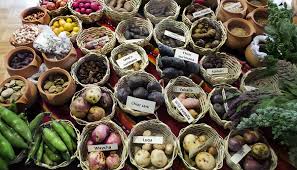Neglected and Underutilized Crops (NUCs): The food for the future?
As a farmer, I realised that some crops have been neglected and underutilized despite how beneficial they are to us. During my Undergraduate days in the University of Port Harcourt, Department of Agricultural Economics and Extension, I did a research on Neglected and Underutilized crops in Tai Local Government Area of Rivers State. Today, I will be sharing a summary of my findings and I hope you find it useful.
Neglected and Underutilized Crops (NUCs) are referred to as crops that have been historically used for their food, fibre, fodder, oil or for medicinal properties, but have been reduced in importance over time due to supply and use constraints such as unrecognized nutritional value, poor shelf life, and poor consumer awareness reputation problems and sometimes due to modern agricultural practices. They are also known as orphan, abandoned, lost, underutilized, local, minor, traditional, and alternative, niche, or underdeveloped crops and more lately often referred to as forgotten or smart food.

As a Trainee at Songhai Farm in Ogoni -Rivers State, Nigeria.
NUC’s are mainly utilised by rural households and isolated traditional communities, but have received very little or no attention from researchers and scientists. These crops serve as alternatives when main crops fail and during time of unrest. However, it is pertinent to point out that most of these NUCs often excel in terms of environmental- adaptability, low input requirements, fit to specific cropping systems, readily harvest and post- harvest processing characteristics. Most of the NUCs provide excellent sources of proteins, vitamins, and minerals to alleviate the hidden hunger and malnutrition that affects the nation and by extension; more than three billion people worldwide.

This isn't a photo shoot but ME learning how to drive and operate the tractor ridger.
Neglected or underutilized crops have the potential to play a number of roles in the improvement of food security that include being:
(i) Part of a focused effort to help the poor for subsistence and income, the majority of whom live in the South;
(ii) A way to reduce the risk of over-reliance on very limited numbers of major crops;
(iii) A way to increase sustainability of agriculture through a reduction in inputs, such as fossil fuel-derived nitrogen fertilizers and fuel for agriculture, given the risks of the carbon footprint of agriculture on climate change and the transition to a post peak-oil world;
(iv) A contribution to food quality; and
(v) A way to preserve and celebrate cultural and dietary diversity.
Just four crops - maize, potato, wheat and rice - account for about 60% of the world's consumption of calories and protein. About 95% of the world's food needs are provided by just 30 species of plant.
Potential of Neglected and Underutilized Crops
About 80000 plant species are used for food and fibre as well as industrial and medical purposes. The number of edible plant species reported are about 10000 appears to be a realistic number to date, however, only four main crops, namely maize, potato, rice, and wheat supply more than 60% of the human's energy intake.
The drastic increase of the world's population in the last two centuries has driven up the need for food and increased food demand. This pressure initiated the distinct intensification in agriculture and horticulture practices and accelerated the loss in crop diversity. More recently, it has become clear that lack of diversity due to concentrating on fewer crops can have negative consequences for the human diet, which may cause malnutrition and diet-related diseases.
Since NUCs are generally rich in nutrients and health-promoting compounds with preventive effects against malnutrition and some chronic diseases, they have a huge potential in improving nutrition and health in indigenous communities in many parts of the world. Therefore, diversifying the food chain to include these neglected species could be an effective tool to improve overall human nutrition and health. Thus, NUCs are characterized not only by local importance; they also might have the potential to improve diet diversity on a more sub-regional level.
TO BE CONTINUED……
In my next post I will be giving;
1 The overview of NUCs in Nigeria;
2 The importance of NUCs in Nigeria;
3 Factors responsible for the neglect and underutilization of some crops; and finally
4 The benefits of some NUCs in Nigeria.

Nice post 👍 Keep it up.
Thanks, I'm grateful. I saw your upvote
Interesting